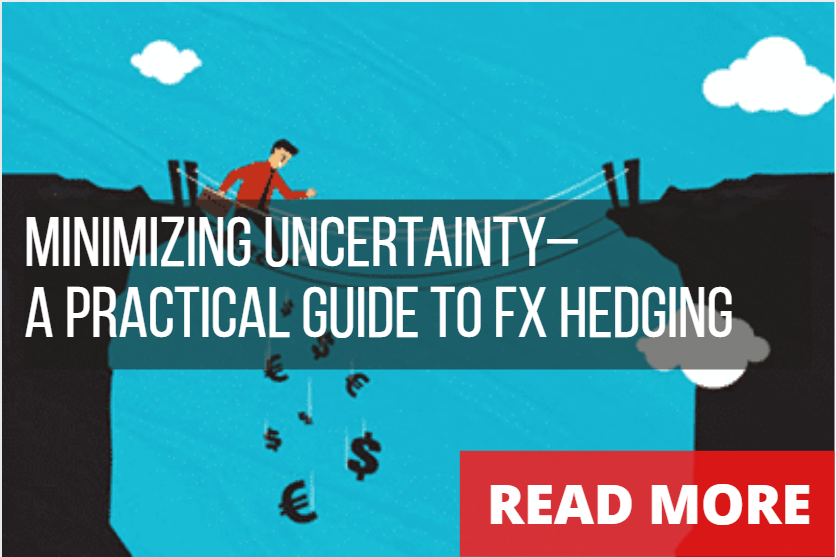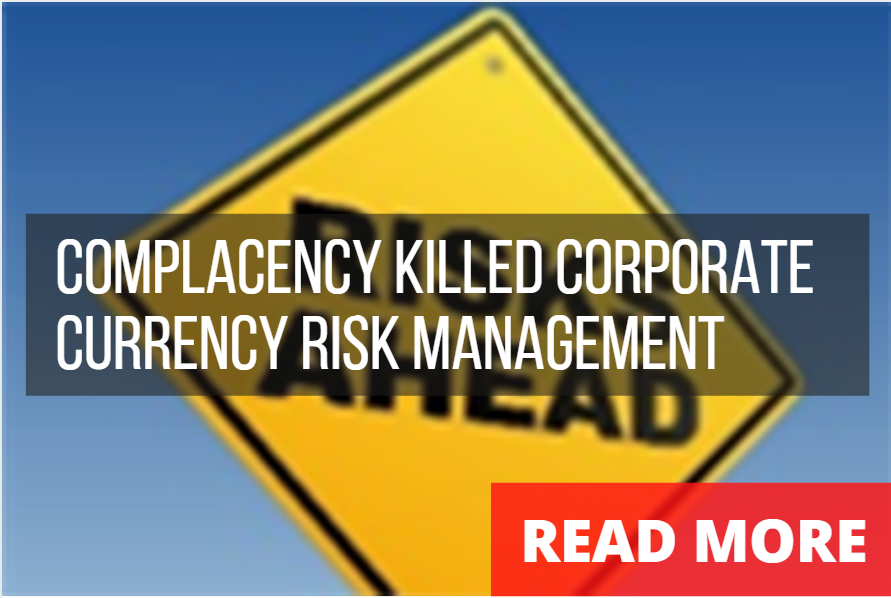
Break the 'Status Quo Bias' Approach to FX Management
By Klarity FX Desk
May 21, 2020
2 MIN READ
Due to the amount of information and variables needed to be addressed, the task of managing a corporate global treasury department can be quite a challenge to anyone. Coping with the prospect of macroeconomic news that may trigger large moves in currency pairs or interest rates, in addition to internal company events, makes the treasury department of utmost importance to the ongoing financial prospects of any international corporation. This article focuses on how corporations can break what we call the “status quo bias” when it comes to managing their forex risks
A company’s economic exposure to exchange rate risk needs to be accurately assessed with the input of the company’s different business units. In order to determine the impact on net cash flow effects that are directly affected by changes in exchange and interest rates, the corporate treasury team must have a precise plan of action to deal with foreseeable macroeconomic or geopolitical events that could adversely influence its profitability.
The Status Quo Bias
Resistance to effective treasury management comes in many forms, and can have significant effects on a company’s bottom line. The “status quo bias” generally refers to a lack of flexibility in a company’s foreign exchange hedging program based on a predisposition to favor the current state of affairs, instead of using the most efficient ways to hedge forex market risk.
One such bias arises from the level of understanding that a treasury manager has of how to quantify foreign exchange risk. The management and sales team in international sectors of a company should be thoroughly educated and ideally agree on the impact of forex rate fluctuations and how they can affect the company’s bottom line. They should also consult with treasury staff to understand, quantify and manage FX risk within a structured plan.
Despite being made aware of how currency and interest rates can affect any company doing business internationally, many treasurers will stubbornly stick to the “This is how we’ve always done it” attitude, regardless of whether the company’s program is effectively managing foreign exchange risk or not. Irrespective of the way they have “always done it”, the fact remains that results from managing forex risk can often be improved considerably after having experts examine the details of the company’s approach.
Breaking Through Counter-Productive Attitudes
In addition to the above attitude, treasurers often will answer with “I’m getting good rates from my provider and we have a good relationship with the trading desk at the bank”. That may be true, however the asymmetric nature of the relationship often leads to a knowledge gap, profit padding, and in some unfortunate cases a conflict of interest. Again based on the “status quo”, this habit needs to be challenged; independence and transparency would allow corporations to significantly improve their risk management outcomes.
Also, some treasurers will say that, “we used forwards in the past and got burned”, and it could be true that their hedges went underwater. Still, anyone familiar with the volatile forex market knows that forward rates do not predict future rates, and reducing risk typically has a better overall outcome to remaining unhedged.
Another counter-productive position many unsophisticated treasurers will assume is the “we just trade spot” stance. This is often motivated by the need for simple accounting, when really the finance team is avoiding the larger economic risk. A failure to understand the true implications of a hedging approach will lead to a misalignment with key stakeholders, and actually lead to unintentional speculation.
Yet another common response might be: “I know we’re doing enough, and you can’t help”. While possibly true, this rather close-minded statement needs to be confirmed on a consistent basis from the results of the treasury in question to its company’s forex risk management performance benchmarks. When challenged, many treasurers are unsure of their actual performance benchmarks. We might also get told that, “my bank provides the service”. This usually reflects an unwarranted amount of loyalty to a commission and/or per transaction fee based financial institution, especially since banks rarely provide a comprehensive risk management service to small and mid-size corporations. Even if they do, such services will typically only be made available to very large companies that seem worthy based on their high transaction volumes.
Treasuries who rely solely on a bank’s assessments of their risks and market levels will significantly underperform a majority of the time relative to those who have allocated resources to build a tailored risk management program.
Streamlining Corporate Forex Risk Management
The first step in managing corporate foreign exchange risk consists of opening communication channels among the different company units. All forex exposures must be collected from the different business units and then consolidated into one system to get an accurate assessment of overall foreign exchange risk. By having each unit submit its exposures, the treasury can relieve each unit of hedging work and cement its role as the firm’s centralized foreign exchange risk management authority.
Once that process has been established, the treasury can then seek a method for automating various risk management functions ahead of taking action in the foreign exchange market. This should enable business units, stakeholders and the treasury team to spend more time collaborating at the beginning of the process, while also providing data for analyzing the treasury’s forex hedge results.



